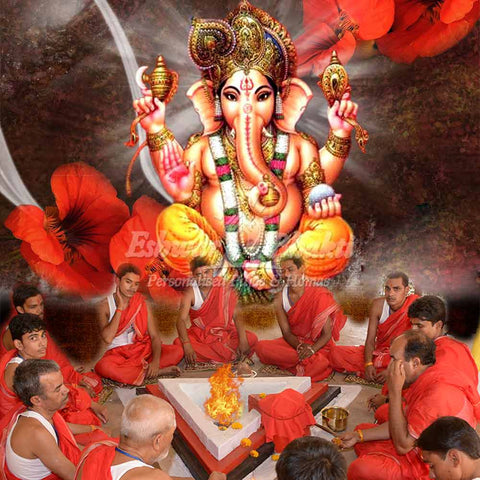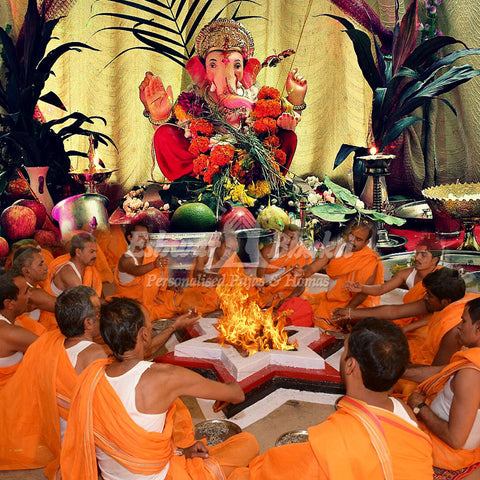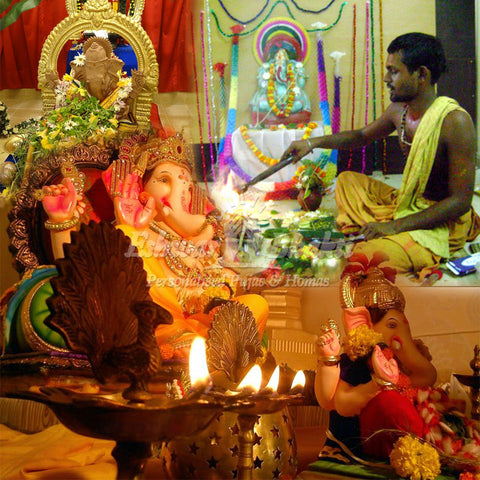What is Swastika?
 The Swastika is an ancient symbol that has been in use since the early Vedic period in India. There is a belief that the Swastika originated in Dwaraka, the city of Lord Krisha. The Swastika has religious connections with Hinduism, Jainism, Buddhism, and Odinism.
The Swastika is an ancient symbol that has been in use since the early Vedic period in India. There is a belief that the Swastika originated in Dwaraka, the city of Lord Krisha. The Swastika has religious connections with Hinduism, Jainism, Buddhism, and Odinism.
• In Hinduism, the devotees draw Swastika for festivals like Diwali, Pujas, and also for other rituals.
• In Buddhism, the Swastika is an icon on the footprints and hearts of the idols of Buddha.
• In Jainism, it is a symbol of the seven Tirthankaras.
The word Swastika originated from the Sanskrit words Su, which means good, and asti, which means existence. So, Swastika refers to good fortune or well being. People often draw Swastika to embrace prosperity, happiness, and purity. During festivities and other occasions, worshippers adorn the threshold of the front entrance of their houses with the symbol of Swastika. Different substances, including flowers, rice, dyed powder, can be used for making a Swastika. You can decorate them further by lighting clay lamps or Diyas.
Meanings associated with Swastika: The Swastika has a plethora of meanings and symbolism. There are references, which view Swastika as a representation of the Sun.
It has connections with the wheel or Chakra of life. The lines of Swastika have a different symbolic meaning. They are-
• The horizontal line of the Swastika is a symbol of stability and expansion.
• The vertical line stands for the sign of creation.
• There are four lines at the end of the horizontal and vertical lines. They are the symbols of continuous or eternal movement.
• The four dots are representations of the Vedas, the Yugas, and the Avasthas.
a) The four Vedas referred to here are the Rig Veda, the Sama Veda, the Yagur Veda, and the Atharva Veda.
b) There are four Yugas, as well. They include Satya Yuga, Treta Yuga, Duapara Yuga, and Kali Yuga.
c) It is also related to the four main goals of our lives. They are the Dharma or the right action, the Artha or the worldly prosperity, the Kama or the earthly enjoyment, and the Moksha or the spiritual liberation.
Significance of Swastika: The Swastika is a mystic symbol or mark. Devotees draw Swastika on the entrances of the houses and newly purchased products. People also use Swastika as a mark on their bodies. It can cleanse, sanctify a place, attract good luck, peace, and prosperity. The symbol is closely related to Lakshmi Devi, the Hindu goddess of prosperity and wealth. There are many religious and scientific significances of drawing Swastika.
Religious Significance: The Swastika has a very sacred religious motif. The Swastika was relevant as a concept of auspiciousness before it became a symbol due to the rise of ritual practices, festivals, temple traditions, and domestic worshipping in India.
• In Lakshmi Tantra, Swastika is a seating posture. There is a reference to the drawing of a four-doored square diagram in the Eastern direction with eight-petalled lotus. You have to make it in red or white color. At the corners, you have to draw four Swastikas in white.
• In Lakshmi Tantra, the image of a square with a thunder mark represents the Earth principle, the half-moon shape with lotus marks stands for the water principle, and the triangular shape with the Swastika in red symbolizes the fire principle.
• The right-faced Swastika signifies prosperity and luck. It has connections with Lord Vishnu and the Sun god.
• The left-faced Swastika, which is commonly known as Sawastika, is a magical aspect associated with the Tantras and Kali.
• In Ganesha Purana, Swastika is a form of Lord Ganesh, and he sits on a lotus flower on a bed of Swastika. You can draw the Swastika to remove the obstacles of life.
• In Rig Veda hymns, Swastika is a symbol of the Surya Deva or the Sun God.
• Studies present Swastika as an indication of the Sudharshana Chakra used by Lord Vishnu.
• The two symbols of the Swastika represent the creator, God Brahman.
a) The right-facing Swastika is a representation of the evolution of the Universe or Pravritti.
b) The left-facing Swastika is a symbol of the involution of the Universe or Nivritti.
There are references to Swastika in Mandukya and Katha Upanishads as well. The four directions pointed by the Swastika indicate grounding and stability. Devotees use Swastikas predominantly to decorate different items in Hindu culture, Yantras, and religious designs.
Scientific Significance: In Vastu Shastra, based on balancing the five elements or Panchabhootas, the drawing of Swastika at different places of the house can remove the imbalances in these elements. They can enhance the energy flow as well. As per Vastu Shastra, the drawing of Sawatika in different directions can have various benefits.
• North-Northeast - It helps in improving our health and speeds up recovery.
• Northeast - It provides mental peace, enhances calmness and creativity.
• East - It aids in fostering our social associations.
• East-Southeast - It helps in easing anxiety and tension.
• South-Southeast - It improves our confidence and strength.
• West-Southwest - It provides educational benefits.
• West-Northeast - It reduces the chances of confronting depression.
• North-Northwest- It helps in improving our relationships.
These are some of the importance of drawing the Swastika. They can ward off negativity or evil forces. They can invite positive energy into our lives.
How to draw Swastika and what to use for it?: While drawing a Swastika, often, people start with a plus sign and progress from it. It is the wrong method of doing it. The intersection of the lines in the middle can bring negative energy. You have to draw the Swastika without the lines cutting each other. Usually, devotees use turmeric, vermillion, rice, dyed powder, and flowers for making a Swastika during festive days, pujas, and other religious rituals.
Swastika, thus, is an auspicious symbol in Hinduism. It can improve positivity, good fortune, prosperity, and happiness in our lives.




